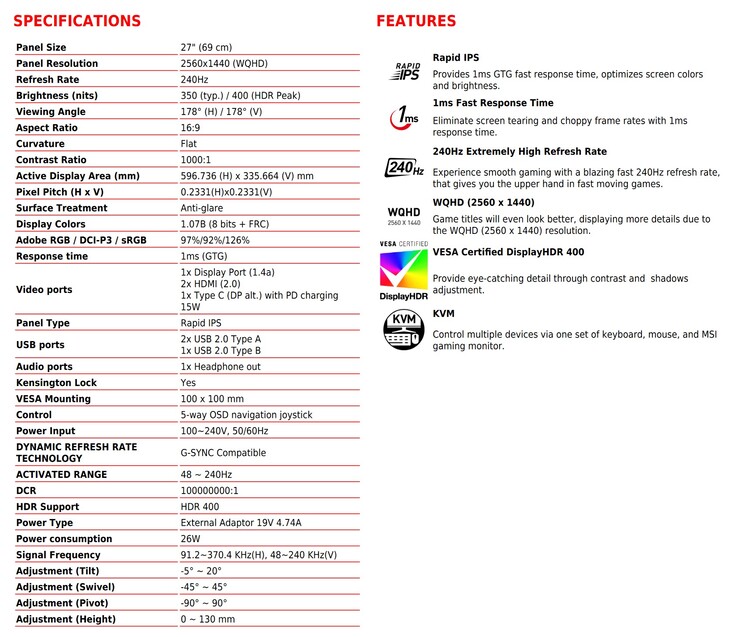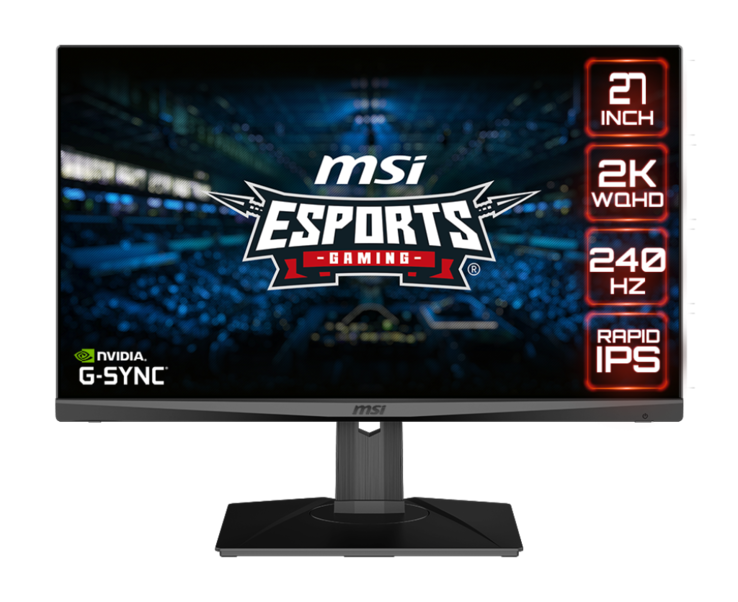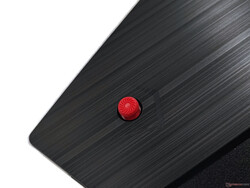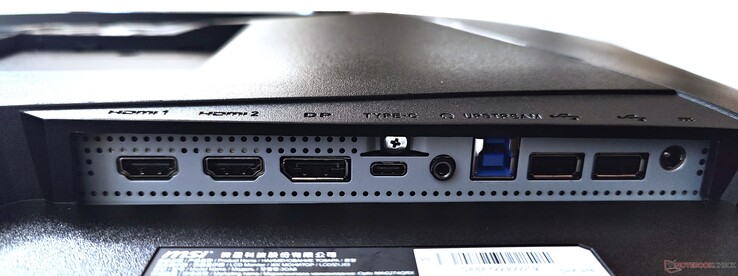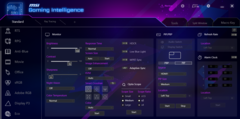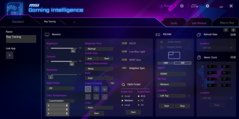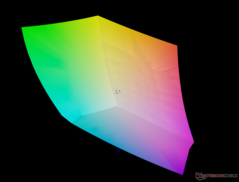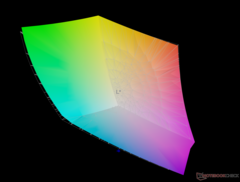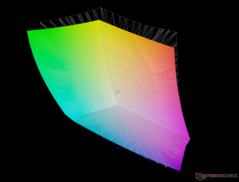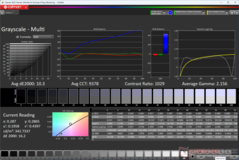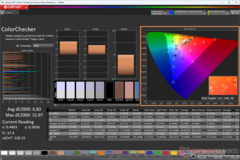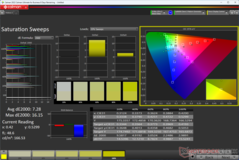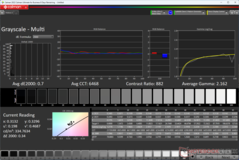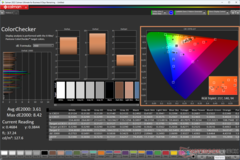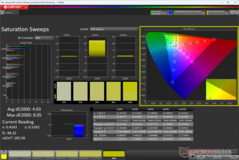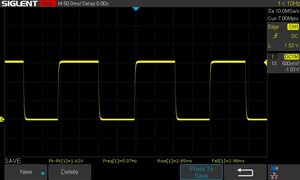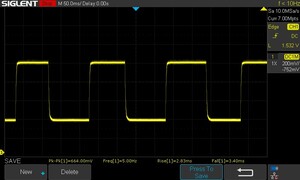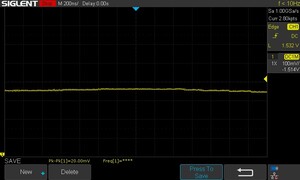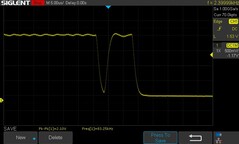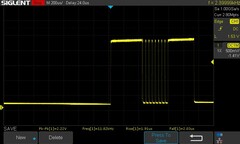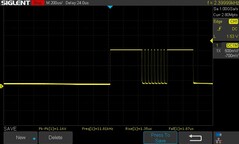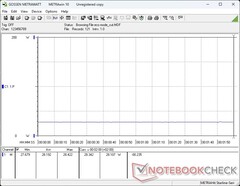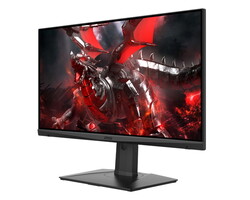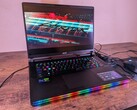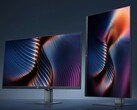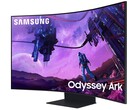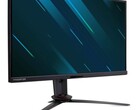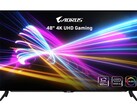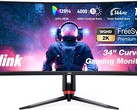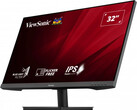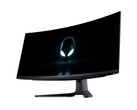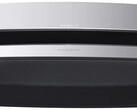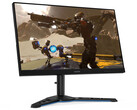MSI Optix MAG274QRX Gaming Monitor Review: QHD 240 Hz goodness with excellent display characteristics for US$500

While 4K monitors are fast becoming the preferred choice for desktops and also as secondary screens for laptops, the market for FHD and QHD monitors hasn't really waned. Compared to many months ago, features such as wide color gamut coverage, HDR support, high refresh rates, and low response times are now becoming commonplace in QHD monitors at lower price points.
MSI recently launched two new MAG QHD monitors in India targeted at the midrange gaming crowd — the Optix MAG274QRF and the Optix MAG274QRX — both of which feature 27-inch WQHD (2560 x 1440) G-Sync compatible panels. While the Optix MAG274QRF offers a 165 Hz refresh rate and 300 nits brightness, the Optix MAG274QRX can hit a 240 Hz refresh rate and 350 nits typical brightness that can go up to 400 nits peak for HDR content.
The MSI Optix MAG274QRX generally retails for US$500, but prices can differ in each store. In India, the monitor has an MRP of ₹45,999 and comes with a three-year warranty.
In this review, we take a look at the Optix MAG274QRX eSports gaming monitor and see how it fares in our standard array of display tests.
Features and specifications: Ticks most boxes
In the box, you get a DisplayPort cable, USB Type-B upstream cable, power supply brick and cable, VESA 100 screws, and the usual paperwork. An HDMI cable should also be included in the retail packaging, but it wasn't present during our unboxing.
The Optix MAG274QRX offers an excellent feature set for the price. The WQHD resolution is a nice compromise between FHD and 4K and is something that most modern GPUs should be able to comfortably handle at high frame rates, particularly with eSports titles.
As an IPS panel, the monitor offers a typical contrast ratio of 1000:1 and can display 1.07 billion colors. However, this is still an 8-bit panel with frame rate control (FRC) to simulate the extra colors. MSI has ensured that the panel is not just suitable for gaming but for content creation as well with 97% Adobe RGB and 92% DCI-P3 color gamut coverages. We will look into these claims shortly.
The Optix MAG274QRX also features a console mode for hooking up the Xbox or PlayStation consoles. Console mode basically downscales the 4K output from the console to the monitor's 1440p standard. The feature also gets variable refresh rate support with the latest firmware update.
The monitor comes with picture-in-picture (PIP) and picture-by-picture (PBP) modes for simultaneously viewing video from multiple sources. KVM 2.0 is available as well.
More information can be had from the official spec sheet below.
Build quality: Sturdy plastic construction
The MSI Optix MAG274QRX primarily has a plastic construction. However, the build quality is good and leaves little room for complaint. Along with a VESA mount, MSI also supplies a stand that allows for adjusting tilt, pivot, swivel, and height, which is a welcome addition as many monitors in this segment make do with just a height adjustment stand.
The MAG274QRX gives off gamery vibes and little has changed in terms of design in the Optix lineup, but it can definitely be used in an office setting. There is a row of RGB lighting on the back panel, which is of little consequence as you cannot see the LEDs directly anyway. Thankfully, they can be turned off in the settings.
All monitor functions can be controlled via the red joystick button on the rear. The joystick is responsive and does not require much actuation force.
One aspect that can be improved is the location of the power button. It is bottom-facing and can be easily missed since the monitor does not automatically turn on from the mains supply.
Connectivity: HDMI limited to 144 Hz
The Optix MAG274QRX offers a standard selection of ports including 2x DisplayPort 1.4a-outs (one via the DisplayPort and another via USB Type-C Alt-mode), 2x HDMI 2.0-outs, 2x USB 2.0 Type-A ports, a USB 2.0 Type-B upstream port, and a headphone jack.
The port placement is typical of most monitors in this segment and can be a tad cumbersome to access if you have a busy desk. There are no onboard speakers provided.
The full 240 Hz refresh rate can only be attained using the DisplayPort since HDMI 2.0 bandwidth is limited to 144 Hz.
Settings: OSD and app controls available
The 5-way joystick offers easy access to the OSD controls. If rubbing a knob constantly isn't your preferred way of interacting with the monitor, you can use the MSI Gaming Intelligence (formerly Gaming OSD) app from the official support page. The monitor's software package includes the driver and an sRGB color profile, though installing this is optional.
The Gaming Intelligence app offers the exact same functionality as the OSD and requires connecting the monitor to the PC via the USB upstream port. The app allows selection of several display presets and further fine tuning them as needed. Functions such as toggling MPRT, Adaptive Sync, and configuring the scope size, crosshair shape, PIP/PBP, etc. can all be accessed easily.
The Tools tab allows for configuring options such as mouse pointer speed, and power and sleep settings. You can also project the screen externally or use the monitor as a remote display for your smartphone or tablet.
Windows 11 already offers extensive split window functions, but Split Window tab offers even more possibilities. There's a hidden macro key towards the bottom left of the panel, which invokes the Gaming Intelligence app by default but can also be configured for other functions.
The app also allows updating the firmware. However, the update cannot be directly downloaded from the web and can only be done offline. The monitor must be connected only via DisplayPort for the process to be successful. We used the latest V015 firmware version for our testing.
Display: QHD 240 Hz panel with good color gamut coverage and no PWM
The MSI Optix MAG274QRX features a “Rapid IPS” panel with a 2560 x 1440 resolution. As seen in the sub-pixel matrix image below, the pixel size is quite large given that the panel yields a density of just 108 PPI.
The 89% brightness distribution is good, but the overall illumination is somewhat uneven. The edge backlighting has some amount of bleed near the corners under long exposure. Subjectively, this does not have any negative impact on the viewing experience.
We recorded a maximum brightness of 351 nits at the display center and a 1064:1 contrast ratio, which are on par with the advertised specifications.
Viewing angles are wide, but we did observe some color and brightness changes at extreme angles.
The monitor offers a variety of presets, but we performed all measurements with the default out-of-the-box settings with the brightness set to maximum.
| |||||||||||||||||||||||||
Brightness Distribution: 89 %
Contrast: 1064:1 (Black: 0.33 cd/m²)
ΔE Color 7.28 | 0.5-29.43 Ø5, calibrated: 3.61
ΔE Greyscale 10.3 | 0.57-98 Ø5.3
96.3% AdobeRGB 1998 (Argyll 2.2.0 3D)
99.9% sRGB (Argyll 2.2.0 3D)
87.5% Display P3 (Argyll 2.2.0 3D)
Gamma: 2.15
| MSI Optix MAG274QRX IPS, 2560x1400, 27.00 | Lenovo Legion Y25-25 IPS, 1920x1080, 24.50 | Asus PB287Q 3840x2160, 28.00 | Dell UltraSharp U3415W IPS, 3440x1440, 34.00 | MageDok Atlas Gaming Monitor 1920x1080, 15.60 | Asus ASUS ZenScreen MQ16AH 1920x1080, 15.00 | |
|---|---|---|---|---|---|---|
| Display | -15% | -20% | -20% | -24% | 4% | |
| Display P3 Coverage | 87.5 | 72.6 -17% | 67.1 -23% | 64.4 -26% | 62.1 -29% | 99.2 13% |
| sRGB Coverage | 99.9 | 96.8 -3% | 92.7 -7% | 96.9 -3% | 90.7 -9% | 99.8 0% |
| AdobeRGB 1998 Coverage | 96.3 | 70.8 -26% | 67.8 -30% | 66.5 -31% | 64.1 -33% | 95.6 -1% |
| Response Times | -4% | -43% | -78% | 80% | ||
| Response Time Grey 50% / Grey 80% * | 6.23 ? | 4 ? 36% | 17 ? -173% 5.2 ? 17% | 10.4 ? -67% | 0.8 ? 87% | |
| Response Time Black / White * | 5.83 ? | 8.4 ? -44% | 7.7 ? -32% 4.9 ? 16% | 11 ? -89% | 1.6 ? 73% | |
| PWM Frequency | 4950 ? | 485 | ||||
| Screen | 7% | 7% | 14% | -21% | 161% | |
| Brightness middle | 351 | 386 10% | 243 -31% | 302 -14% | 144.9 -59% | 402 15% |
| Brightness | 329 | 366 11% | 218 -34% | 270 -18% | 146 -56% | 408 24% |
| Brightness Distribution | 89 | 89 0% | 83 -7% | 83 -7% | 91 2% | 97 9% |
| Black Level * | 0.33 | 0.65 -97% | 0.28 15% | 0.29 12% | 0.78 -136% | 0.03 91% |
| Contrast | 1064 | 594 -44% | 868 -18% | 1041 -2% | 186 -83% | 13400 1159% |
| Colorchecker dE 2000 * | 7.28 | 4.8 34% | 3.49 52% | 2.73 62% | 5.79 20% | 4.34 40% |
| Colorchecker dE 2000 max. * | 16.15 | 7.5 54% | 8.43 48% | 8.64 47% | ||
| Colorchecker dE 2000 calibrated * | 3.61 | 1.9 47% | 2.12 41% | 4.34 -20% | ||
| Greyscale dE 2000 * | 10.3 | 5.1 50% | 2.95 71% | 3.37 67% | 6.7 35% | 1.87 82% |
| Gamma | 2.15 102% | 1.84 120% | 2.2 100% | 2.2 100% | 1.96 112% | 2.46 89% |
| CCT | 9378 69% | 6525 100% | 6811 95% | 6809 95% | 6295 103% | 6365 102% |
| Color Space (Percent of AdobeRGB 1998) | 63.45 | 60 | 60.96 | 58.2 | ||
| Color Space (Percent of sRGB) | 96.73 | 96.81 | 90.7 | |||
| Total Average (Program / Settings) | -4% /
1% | -19% /
-13% | -3% /
4% | -41% /
-30% | 82% /
116% |
* ... smaller is better
The Optix MAG274QRX covers 100% of the sRGB color space and a very good 96.3% of Adobe RGB, so the display is quite amenable for general productivity, content creation, and of course gaming.
MSI claims a 92% DCI-P3 coverage, but we measured 87.5% in the default settings. This is still decent and should help with HDR content.
Out-of-the-box calibration with the included ICC profile has high Delta E 2000 deviations. Prior to calibration, the average Delta E 2000 in grayscale measurements was 10.3 while ColorChecker values deviated by an average of 6.83 with a maximum delta E 2000 of 15.97.
Calibrating the display using the X-rite i1Basic Pro 3 spectrophotometer and the Calman Calibration Software from Portrait Displays resulted in significantly improved color accuracy. The average grayscale Delta E 2000 is now just 0.7 while average ColorChecker deviations are reduced to 3.61 and a maximum of 8.42.
The Optix MAG274QRX is not marketed at the professional crowd, so these post-calibration numbers are still respectable. Nevertheless, the monitor offers good potential for content creation work if you so desire.
Our calibrated ICC file can be downloaded from the link above.
Display Response Times
| ↔ Response Time Black to White | ||
|---|---|---|
| 5.83 ms ... rise ↗ and fall ↘ combined | ↗ 2.85 ms rise | |
| ↘ 2.98 ms fall | ||
| The screen shows very fast response rates in our tests and should be very well suited for fast-paced gaming. In comparison, all tested devices range from 0.1 (minimum) to 240 (maximum) ms. » 13 % of all devices are better. This means that the measured response time is better than the average of all tested devices (21.5 ms). | ||
| ↔ Response Time 50% Grey to 80% Grey | ||
| 6.23 ms ... rise ↗ and fall ↘ combined | ↗ 2.83 ms rise | |
| ↘ 3.4 ms fall | ||
| The screen shows very fast response rates in our tests and should be very well suited for fast-paced gaming. In comparison, all tested devices range from 0.2 (minimum) to 636 (maximum) ms. » 14 % of all devices are better. This means that the measured response time is better than the average of all tested devices (33.7 ms). | ||
MSI claims a 1 ms grey to grey response time, but this is not true in the default setting. We observe a 5.83 ms 100% black to 100% white response time while the transition from 50% grey to 80% grey takes 6.23 ms. These values are good for the majority of games, but they could have still been better.
If you need faster response times, you can change the setting in the app or the OSD to Fast or Fastest in order to increase the panel overdrive. We do not recommend going beyond the Fast setting as it can result in a significant overshoot and ghosting.
The Fast setting is best used if your game can maintain a steady 240 fps, so that it matches the 240 Hz refresh rate of the monitor and minimizes overshoot. However, such high frame rates are only possible at reduced quality settings and in games that are not too demanding on most typical PC configurations.
Therefore, the default Normal mode is ideal for a variety of game and content types and does not produce any overshoot as evident from the oscilloscope patterns above.
Screen Flickering / PWM (Pulse-Width Modulation)
| Screen flickering / PWM not detected | ≤ 100 % brightness setting | ||
In comparison: 53 % of all tested devices do not use PWM to dim the display. If PWM was detected, an average of 17900 (minimum: 5 - maximum: 3846000) Hz was measured. | |||
We did not detect PWM in the default settings at all tested brightness levels, which means less strain on your eyes during those long gaming marathons.
For more information, check out our article “Why Pulse Width Modulation (PWM) is such a headache”, and also our PWM Ranking Table for comparisons across all reviewed devices.
Moving Picture Response Time (MPRT)
Moving picture response time (MPRT) determines the persistence of a pixel or how long it is continuously visible. A lower MPRT reduces motion blur, which helps with many fast-paced games. A 240 Hz display like the Optix MAG274QRX would have an MPRT of 4.16 ms.
Many manufacturers advertise a 1 ms MRPT, but that would theoretically require a 1,000 Hz display and 1,000 fps output from the GPU to achieve this without any form of backlight strobing adjustments.
Since current display tech has not yet evolved to offer such a performance, display makers use several techniques to reduce motion blur such as black frame insertion.
The MSI Optix MAG274QRX allows enabling MPRT Sync from the app or the OSD to reduce motion blur. This comes with the disadvantage of significantly reduced display brightness, so it is best used in a dark ambience.
With MPRT Sync enabled, we observe a PWM of 83.25 kHz with the oscilloscope pattern indicating insertion of a black frame just before the next strobing cycle begins. This black frame insertion pattern is seen in both the response time graphs as well.
Power Consumption: Economical with MPRT Sync enabled
The MSI Optix MAG274QRX is quite economical in overall power consumption despite its feature set. At idle, without any input signal, we recorded an average power consumption of just 488 mW. MSI claims a power consumption of 26 W, but that's only possible in the Eco mode.
The monitor consumes an average of 31 W at 50% brightness and this rises to 41.5 W at 100% brightness, both with MPRT Sync disabled. Enabling MPRT Sync drops the average energy requirement from the wall to 27.5 W. This results in a reduction in overall brightness even though the OSD setting shows 100%.
There is no perceivable Wattage change when RGB is disabled.
Pros
Cons
Verdict: One of the best QHD 240 Hz displays on the market
Gaming monitors have come a long way from just sporting TN panels with FHD resolutions to proper IPS displays that are also viable for content creation on the side. While 165 Hz QHD monitors have been available on the market for quite some time now, it is only recently that we have started seeing 240 Hz refresh rates coming to 1440p displays.
The MSI Optix MAG274QRX comes across as an extremely capable QHD 240 Hz monitor that is perfectly suitable for both competitive gaming and professional work.
The build quality is sturdy and without any creaks despite being primarily made of plastic. The provision of a multi-use stand that can do tilt, swivel, pivot, and height adjustment is a nice bonus. You can attach any VESA-compatible mount you prefer as well. The joystick is quite responsive, but the placement of the macro shortcut key and the power button could have been in a more prominent place.
All the expected ports for a monitor in this price segment are present, but the HDMI port is still based on the 2.0 standard which limits the maximum refresh rate to 144 Hz.
The MSI Optix MAG274QRX is a QHD 240 Hz eSports monitor with excellent performance that will please both gamers and content creators alike. The Optix MAG274QRX offers little room for complaint and comes at a price that significantly undercuts some big names in this segment.”
The monitor's OSD is quite feature-rich, and MSI also provides the option of controlling the settings and updating firmware via the Gaming Intelligence app. The usual gamer-centric features such as scopes, crosshairs, and black equalizer settings are available. Quality-of-life features such as a KVM switch, PIP/PBP modes, low blue light toggle, snap layouts, and quick access presets are present as well.
Gaming monitors tend to prioritize faster refresh rates over actual image quality, but the Optix MAG274QRX offers superior display characteristics. The panel has excellent sRGB and Adobe RGB coverage along with very good Display P3 numbers as well. Color accuracy is not ideal by default, but our calibration routine should offer much improved colors if you plan to use this display for professional work.
Response times are good for a gaming monitor, though it is not OLED-level. It is possible to further reduce response times, but that comes at the expense of overshoot and ghosting. Enabling MPRT Sync can reduce the ghosting effects to a large extent, but it also reduces display brightness significantly.
Power consumption is fairly economical as long as you don't use the panel at 100% brightness. HDR support is present, but you should be looking at this monitor primarily for its SDR performance.
The major competitor to this monitor is the Gigabyte M27Q X, which also offers a similar feature set at possibly lower prices. Still, the MSI Optix MAG274QRX's offers a lot for the money compared to more premium QHD options such as the Acer Predator XB273U GX, Alienware AW2721D, Samsung Odyssey G7, and the Asus ROG Swift PG279QM.
Just be sure to hook it up to a powerful PC.
Price and Availability
The MSI Optix MAG274QRX is available on Amazon US at prices starting from US$601. The monitor is available on Newegg for US$549, and can also be had for US$499.99 at Micro Center, if you happen to live in proximity to the store.
In India, the MSI Optix MAG274QRX starts from ₹45,999. Amazon India is currently offering the monitor for ₹46,999. It is possible to find the monitor retailing at discounted prices at other retailers.


 Deutsch
Deutsch English
English Español
Español Français
Français Italiano
Italiano Nederlands
Nederlands Polski
Polski Português
Português Русский
Русский Türkçe
Türkçe Svenska
Svenska Chinese
Chinese Magyar
Magyar